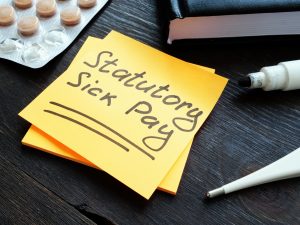For businesses, Value-Added Tax (VAT) is often viewed as one of the more complex of all tax liabilities. This is because, in effect, VAT-registered businesses collect VAT on the sale of eligible goods and services on behalf of the tax authorities (HMRC) by charging the extra to the company, and then pay what is collected back via their own tax bill.
The careful accounting this requires is exacerbated by a whole range of exemptions, reduced rates and special conditions. But for businesses that sell used products, there is good news – one of these special circumstances, known as the VAT Margin Scheme, reduces the amount of tax you have to pay back on goods you sell.
How standard VAT works
For ordinary retailers selling everyday VAT-eligible items, standard VAT works like this:
- Each item has a retail price before VAT is added.
- Whatever this retail price is, VAT is added on top at the standard rate – currently 20%.
- This gives the final VAT-inclusive total the customer has to pay. So if an item had a retail price of £100, the customer would actually pay £120.
- The retailer is then eligible to pay back this £20 tax it has collected to HMRC. However, this is complicated by the fact that businesses can offset this ‘output tax’ with their ‘input tax’, i.e. however much VAT they have paid on goods and services bought from suppliers.
All of this only applies once a business reaches the VAT turnover threshold, currently £85,000. If a small business takes less than this in a tax year, it does not have to register for VAT and therefore does not have to charge it on the goods and services it sells.
How the VAT margin scheme works
If you are a VAT-registered business that sells any kind of pre-owned goods – used phones, second-hand furniture, books, records and so on – you are allowed to calculate VAT in a different way. The key differences are:
- Marginal VAT is calculated on the difference between what you bought the second-hand item for and what you sold it for – your margin – NOT the full resale price.
- Marginal VAT is charged at a reduced rate of 16.67%.
Both of these stipulations have the effect of reducing the amount of VAT you add on per item, and therefore the amount of tax you have to pay back to HMRC. It represents a great deal for second-hand retailers. But not surprisingly given the advantages it offers, there are some strict conditions of eligibility.
Eligibility for the scheme
To calculate VAT using the Margin Scheme, the following have to apply:
- You must not take into account any additional costs you have incurred in getting a phone ready for resale, such as reconditioning and repair. Marginal VAT is calculated purely on the difference between what you pay and what your receive for each item.
- You must keep clear and precise records of where you bought each item, what you paid and previous VAT paid.
- All invoices must show VAT-inclusive prices only and all calculations have to be based on VAT-inclusive prices.
- You cannot charge VAT at the marginal rate if you paid VAT at the standard rate when you bought the item. The Margin Scheme is therefore only available when you either buy second-hand devices from non-VAT registered sources, or from businesses that themselves make use of the Margin Scheme.
Is the scheme for me
Typical businesses that are eligible to use the VAT margin scheme include, those that sell:
- second-hand goods;
- works of art;
- antiques;
- collectors’ items
Used cars are not included in this scheme
Do I need to register for the scheme
You don’t actually need to register for the margin scheme. Once you are registered for VAT, you can simply start to use it provided you meet the strict conditions.
What if I sell both new and used goods?
The Second Hand Margin Scheme is not an all or nothing scheme. In other words, if you make a sale that does not meet all the conditions then you must account for VAT in the standard way.
You’ll need to decide at the time of each sale whether you are going to apply to VAT Margin Scheme or Standard Scheme since you:
- cannot go back at a later date and switch schemes.
- must raise the appropriate sales invoice to reflect your choice of sale at the tax point.
Example
Liu Wang runs a second-hand watch business and is registered for VAT.
She buys a watch for £1,500 from an individual (not VAT registered) and then sells it for £2,000 to another individual (also not VAT registered). Using the margin scheme, she will pay VAT on the difference between she bought & sold the watch at, £500. Therefore she will pay VAT of £83.33.
If she was using the Standard VAT Scheme she would have had to either increase her selling price to £2,400, making her potentially uncompetitive. Or take VAT of £333.33 out of her selling price.
SRC-Time are one of the South East’s leading accountancy firms in advising the self-employed and partnerships in all aspects of their tax affairs and we are able to assist in any issue raised above.
Our expert team is available to provide you with advice and can be contacted on 01273 326 556 or you can drop us an email at info@src-time.co.uk or speak with an account manager to get any process started.

